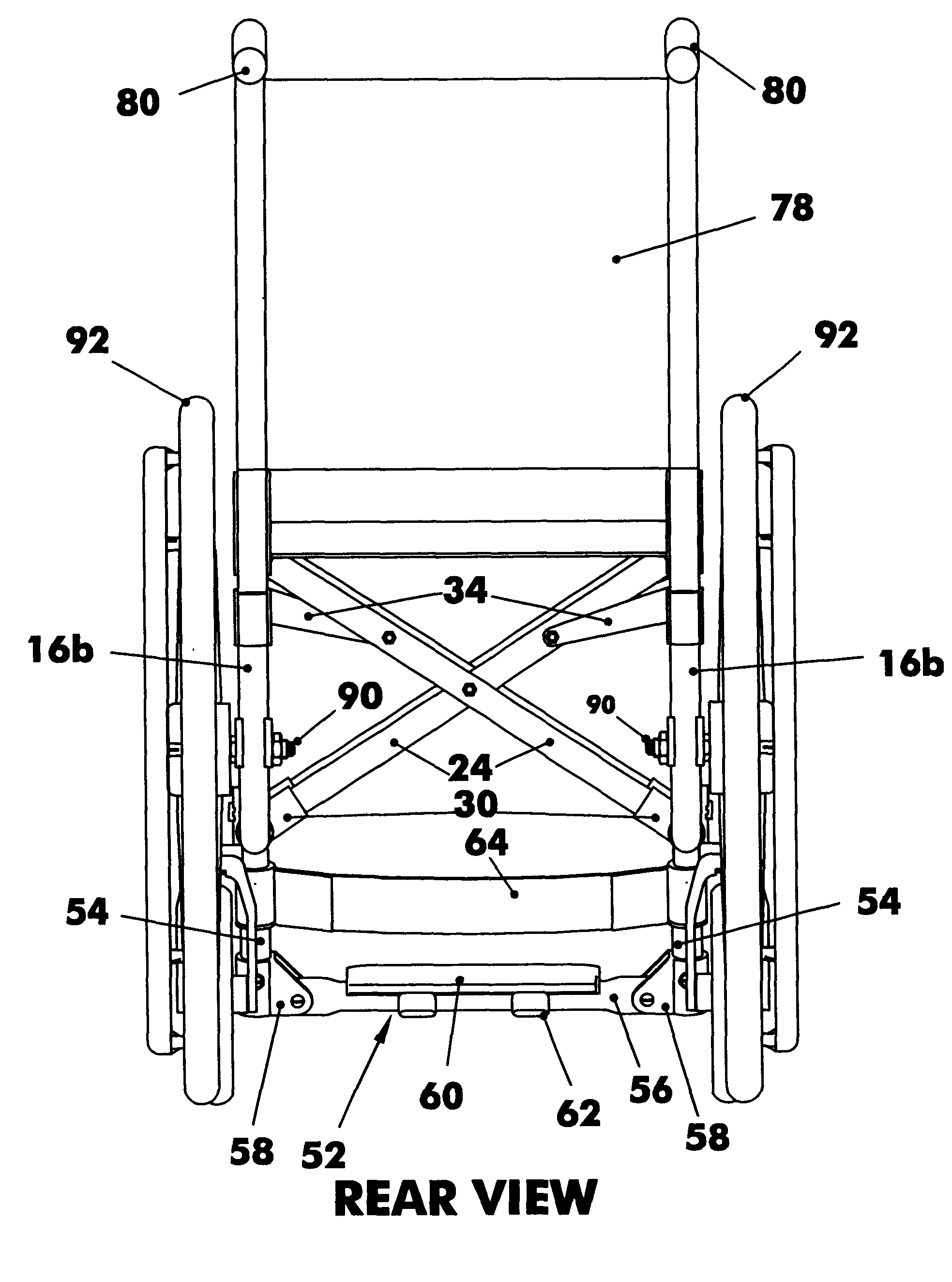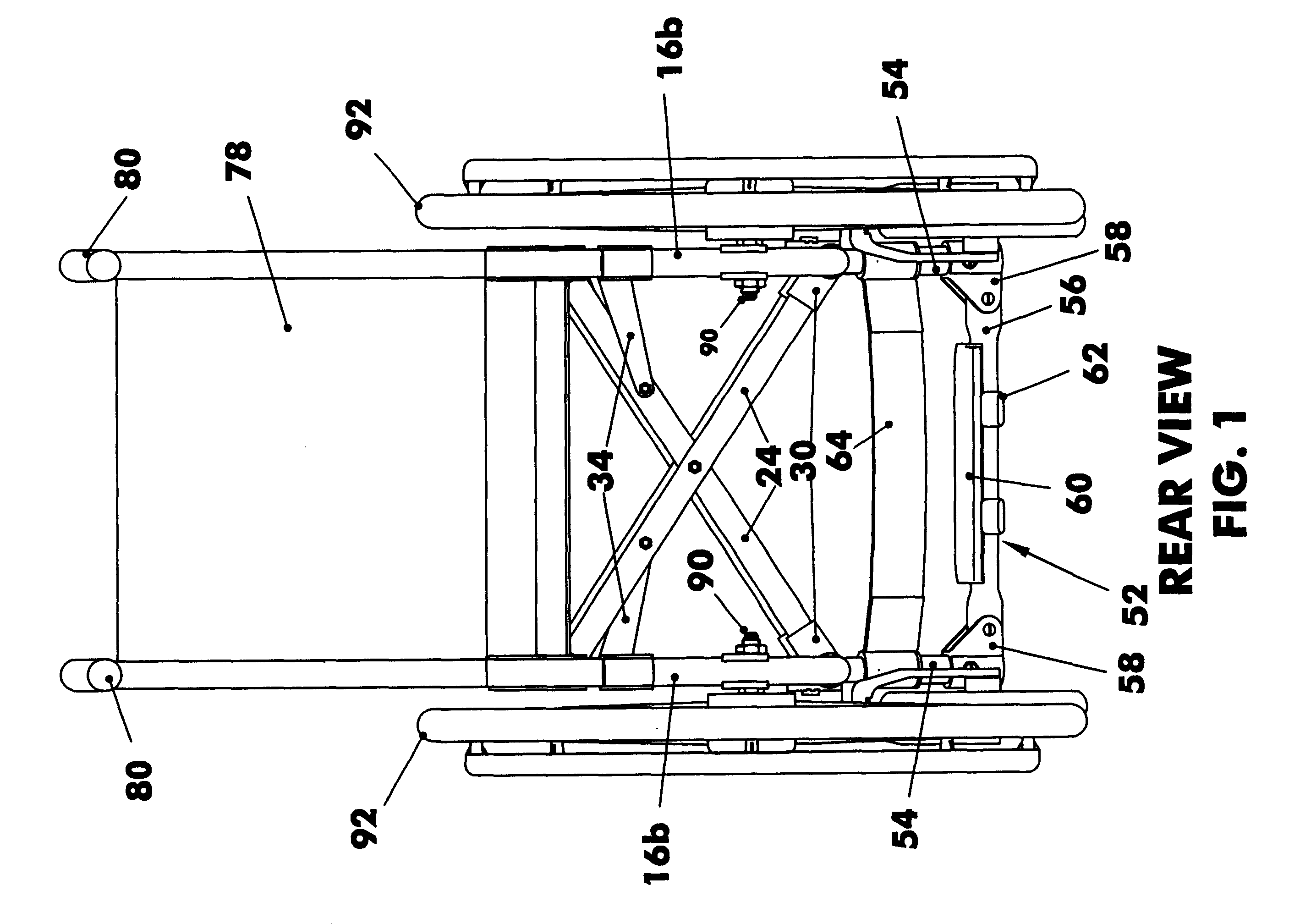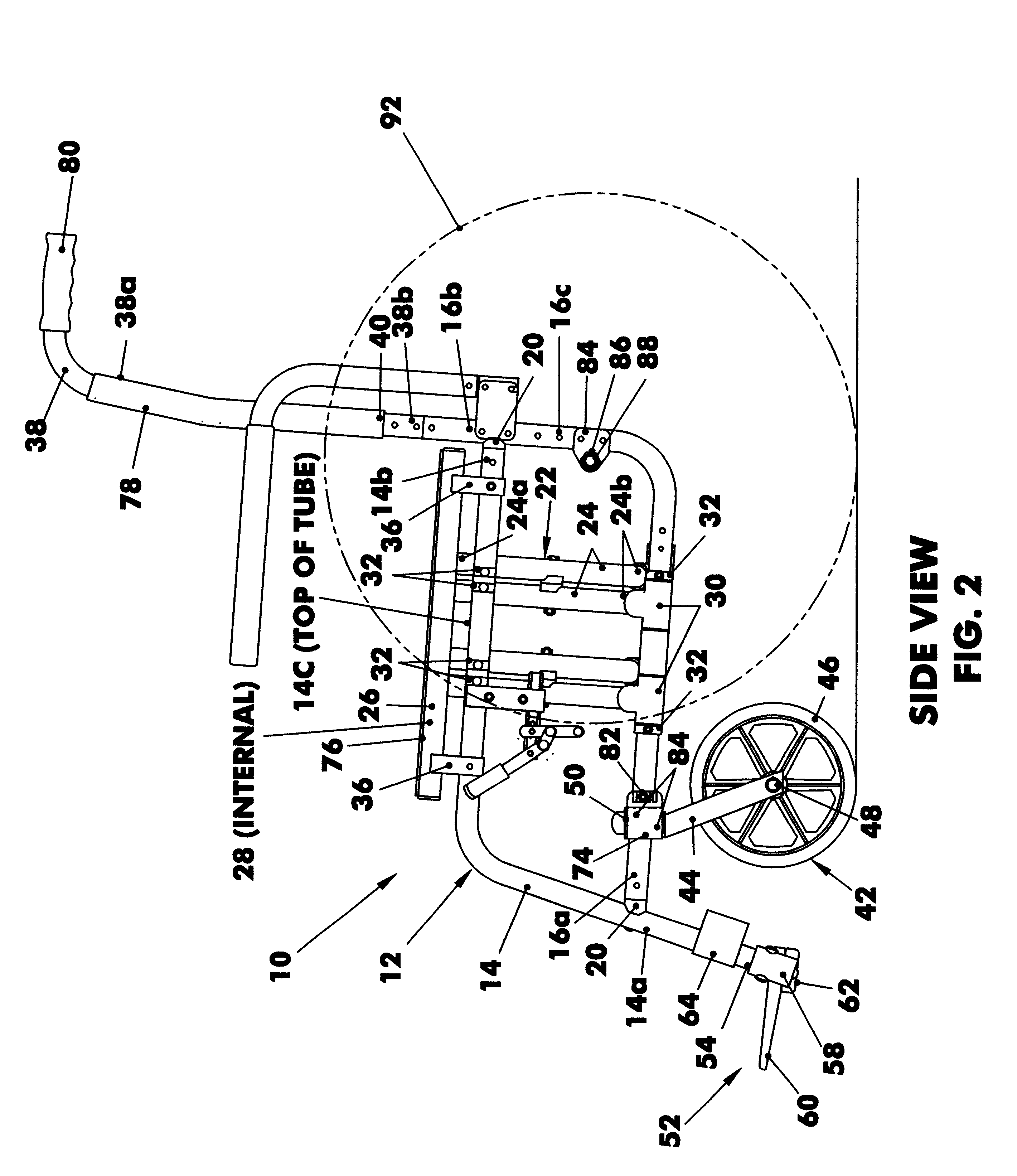Convertible wheelchair
a wheelchair and convertible technology, applied in the field of wheelchairs, can solve the problems of low energy efficiency, welded construction, and wheelchairs that do not fold as compactly
- Summary
- Abstract
- Description
- Claims
- Application Information
AI Technical Summary
Benefits of technology
Problems solved by technology
Method used
Image
Examples
Embodiment Construction
Referring now to the figures, in which identical or similar parts are designated by the same reference numerals throughout, and first referring to FIGS. 1, 2 and 3, a folding wheelchair in accordance with the present invention is generally designated by the reference numeral 10.
The chair 10 has a pair of like side frame assemblies 12 spaced from each other and including a generally horizontal top tube 14 and a generally horizontal bottom tube 16 below the top tube. The top and bottom tubes have front or distal ends 14a, 16a and rear or proximal ends 14b, 16b. Top and bottom tubes are joined at front ends 14a, 16a using connector fittings 20. The top tube 14 and the bottom tube 16 are secured to each other at front 14a, 16a and at the rear 14b, 16b using connector fittings 20. The top tube 14 has a row of holes 14c for seat attachment when converted to a rigid frame wheelchair.
The chair also has like crossbar assemblies 22 including an angular crossbar tube 24 and a generally horizon...
PUM
 Login to View More
Login to View More Abstract
Description
Claims
Application Information
 Login to View More
Login to View More - R&D
- Intellectual Property
- Life Sciences
- Materials
- Tech Scout
- Unparalleled Data Quality
- Higher Quality Content
- 60% Fewer Hallucinations
Browse by: Latest US Patents, China's latest patents, Technical Efficacy Thesaurus, Application Domain, Technology Topic, Popular Technical Reports.
© 2025 PatSnap. All rights reserved.Legal|Privacy policy|Modern Slavery Act Transparency Statement|Sitemap|About US| Contact US: help@patsnap.com



